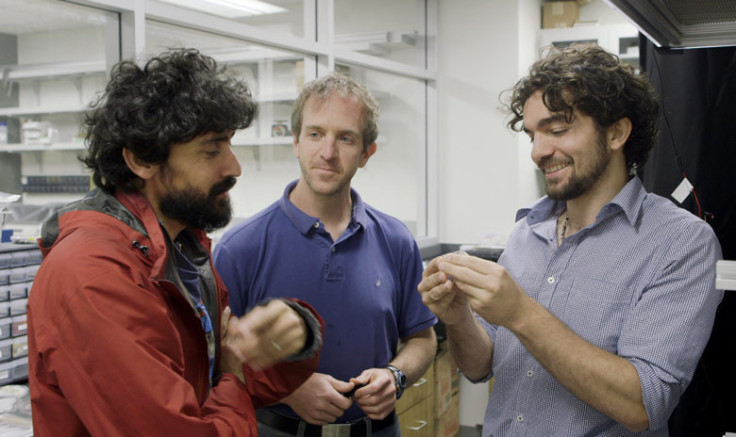Computer that works on water droplets developed at Stanford

Scientists at Stanford have built a computer that operates on water droplets to process information and manipulate physical matter.
While the speed of the droplet computer is significantly lower than electronic computers, that is not stopping its developers who are more intent on algorithmically manipulating physical matter which they demonstrated at the mesoscale.
The immediate application could see the computer turn into a high-throughput chemistry and biology laboratory where each droplet can act as a test tube.
The droplet computer could offer unprecedented control over these interactions, says Stanford bioengineer Manu Prakash, who led the work that derives from the physics of moving droplets.
Arrays of tiny iron bars held in a layer of oil between glass slides act as a computer clock. Water droplets infused with tiny magnetic nanoparticles were injected into the above system.
Turning on the magnetic field set the clock into a series of flips every time the field flipped. When the polarity of the bars change, the magnetised droplets move in a new, predetermined direction.
Every rotation of the field counts as one clock cycle, and every drop marches exactly one step forward with each cycle. The presence or absence of a drop in each spot tallies with a binary 1 or 0.
Any universal logic gate used in electronics can be made by arranging the position of the bars on the chip, says graduate student Georgios Katsikis who with Jim Cybulski assisted Prakash.
A camera records the interactions between individual droplets, allowing observation of computation as it occurs in real time. The clock ensures that all droplets move in perfect synchrony, and thus the system can run virtually forever without any errors.
The current chips are about half the size of a postage stamp, and the droplets are smaller than poppy seeds, but Katsikis believes it can be made even smaller.
The challenge was in building a rotating magnetic field that could act as a clock to synchronise all the droplets and influence multiple droplets at a time.
The system needed to be scalable so that in the future, a large number of droplets could communicate among each other without skipping a beat.
Every computer program on every gadget ranging from smart phones to airplanes and the Internet requires a clock to oversee several simultaneous operations and synchronise them. The droplet computer offers applications in throughput chemistry, biology and digital manufacturing.
The findings are published in the current edition of Nature Physics.
© Copyright IBTimes 2024. All rights reserved.






